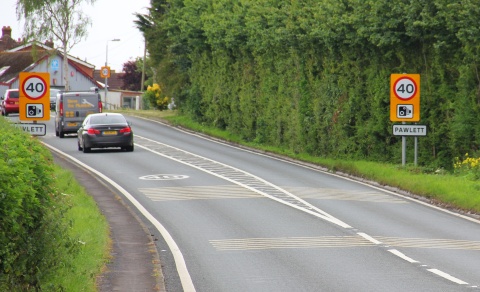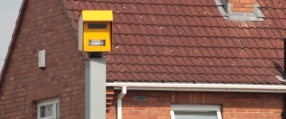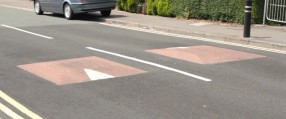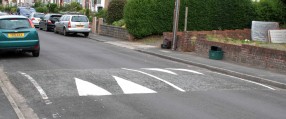Speed limits

Speed limits state the maximum speed permitted on a given road. The speed limit is displayed at the beginning of the applicable section of road, inside a circular sign. Smaller repeater signs can be used to remind vehicle drivers of the speed limit as they use the road.
The presence of street lights indicates the speed limit is 30 mph unless stated otherwise.
Abiding by the speed limit is a legal requirement. It is an offence to exceed the speed limit, with a minimum fine of £100 if a vehicle driver is caught.
Disadvantages
- Speed limits can be easily ignored
- This is far more likely if the speed limit is unrealistic, and doesn't suit the character of the road
- The Police carry out speed limit enforcement, however this can only happen periodically. Where speed limits are unrealistic, it will be expensive and difficult for the Police to enforce
- Can lead to sign clutter where speed limit repeater signs are required - this will be especially noticeable in rural locations
Guidance on speed limits
Somerset County Council's engineers must abide by Government guidance when setting speed limits.
The "Setting local speed limits" document provides direction on which speed limit is applicable to roads with particular characteristics.
The document is available here.
Caution over speed limits
Installing the wrong speed limit on a road will mean it won't work properly. The speed limit must be appropriate, taking into account all the road's characteristics. This includes how residential the area is, how people use the land near the road, and the road itself (width and severity of bends).
A 40 mph speed limit which is well suited to the road and is well respected by vehicle drivers is better than a 30 mph limit which is unsuitable and regularly ignored.
Advantages
- No negative impact on buses or emergency vehicles
- Can help to reduce speeds before exploring traffic calming treatments

Effectiveness
Where speed limits are realistic, and the Police carry out periodic enforcement (if necessary), it is likely there will be a reduction in motor vehicle speeds.
Reducing motor vehicle speeds increases safety because:
- The vehicle has travelled less distance before the driver can react to a hazard
- Braking distance is reduced, so the vehicle can stop more quickly before a hazard
- A slower moving vehicle will exert less energy on occupants as the vehicle rapidly changes speed on impact (crashes)
- A slower moving vehicle will transfer less energy to a pedestrian in the event of a collision.











